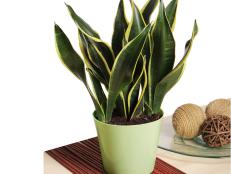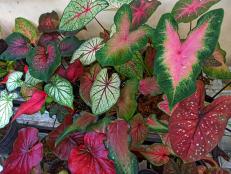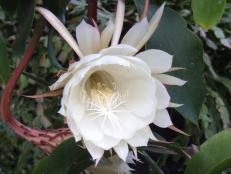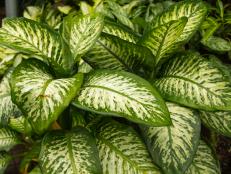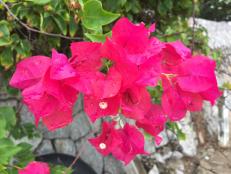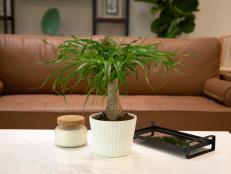How to Grow and Care for a Money Tree Plant
Money may not grow on trees, but the money tree plant delivers good fortune and positive energy — or so the legend goes. Learn how to care for this easy-growing beauty.
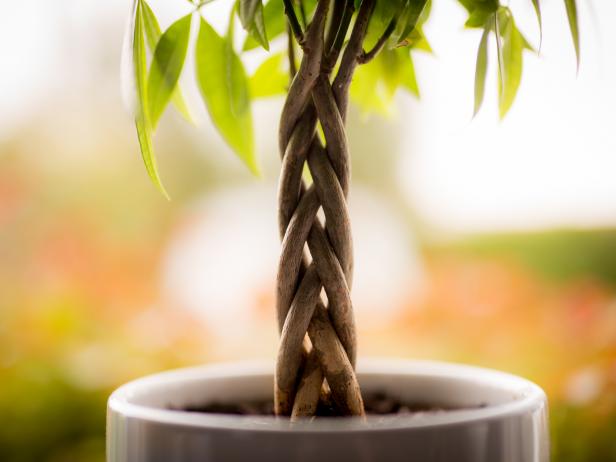
Shutterstock/Robert MacMillan
Ever dreamed of owning a money tree? Make your dream come true by getting a money tree plant! It may not produce dollar bills, but this tropical beauty is easy to find at local garden centers or online. It’s even easier to grow, thriving indoors and out.
Money tree plant goes by a host of names, including Malabar chestnut, saba nut, Bombax glabrum, monguba and French peanut. It’s said to bring good luck and is a popular plant for using with feng shui principles. From shiny, hand-shaped leaves to pretty braided trunks, the money tree is a can’t-miss indoor plant. It delivers lush good looks in any setting. Learn what you need to know to help your money tree plant thrive.
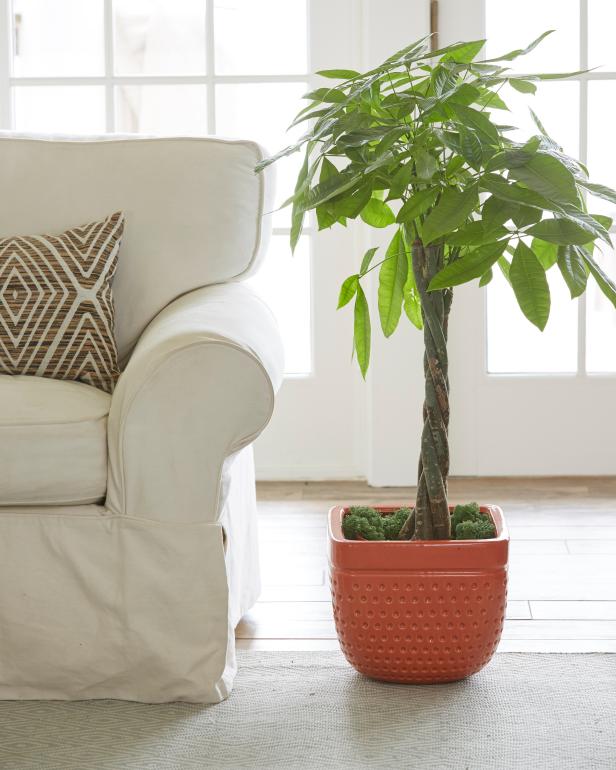
Costa Farms at CostaFarms.com
Basic Money Tree Plant Care
Money tree plant is tropical, native to Central and South America. It typically grows in marshy wetlands where there’s plenty of moisture and high humidity. Indoors, you’ll see the best results if you can mimic those natural growing conditions.
Sunlight. In a typical indoor setting, place your money tree plant in a spot with bright, indirect light. That means near a sunny window, where there’s plenty of ambient light for your plant. Too much sunlight can burn leaves, leading to brown patches. Too little light, and leaves tend to turn yellow. Remember to rotate your plant a little each time you water to keep growth even and not leaning toward the light.
Temperature. Ideal growing temps for a money tree are between 50 to 90 degrees Fahrenheit. Indoors, locate your plant away from drafts — that means away from an exterior door or heating/cooling vent. If you’re growing your plant outdoors, it’s hardy in Zones 10 to 11. When air temperatures fall into the upper 40s, it’s time to bring your plant indoors or protect it as best you can from the chill.
Water. If you tend to overwater houseplants, a money tree plant is a good choice for you, because it does like soil on the moist side. The botanical name is Pachira aquatica. The species name “aquatica” gives a hint about the kind of moisture this plant prefers. But when you’re growing it indoors, you need to avoid overwatering, which can kill the plant. Don’t let it sit in water, especially overnight. The best way to water a money tree plant indoors is to let the soil dry before you water again.

Shutterstock/Robert MacMillan
Humidity. Money tree plants benefit from high humidity. Indoors, use a humidifier, a pebble tray filled with water or misting to help raise the humidity around your plant.
Fertilizer. Choose a typical houseplant fertilizer to feed your money tree. Follow fertilizer instructions for the right dose of plant food. You can feed your money tree plant as little as twice a year — once at the start of spring and again in midsummer. In all but the warmest zones, skip fertilizing in winter.
Braided Trunks
It’s very common to find several money tree plants in the same pot with the trunks braided together. This does not hurt the plants. Some growers say that the braid helps to “lock in” money tree’s good fortune. After trunks are braided, they continue to grow in that formation. You can always prune away any branches that sprout or threaten to deform the braid. As the tree ages, the trunks grow fatter and fuse, creating a striking plant.

Courtesy Costa Farms
Design Ideas
With a braided trunk, money tree plant easily commands attention in any setting. To add your own signature style to your plant, consider covering the soil surface with items that relate to the plant’s native wetland setting, such as polished river rock, glass fishing floats or sea glass.
Or you can cover the soil with a living ground cover, like calathea or baby’s tears (Soleirolia soleirolii). Be sure to choose houseplant ground covers that need the same growing conditions as the money tree plant for best results.
You can also create a grouping of potted plants with leaves that provide a textural contrast to your money tree. Good candidates include peace lily, snake plant (Sansevieria), Chinese evergreen (Aglaonema) or fiddle leaf fig (Ficus lyrata).
Common Problems
For the most part, you probably won’t experience challenges growing money tree plant. It really is easy to grow. But if you do have issues, it will likely have to do with the leaves.
- Yellow leaves occur when a plant is overwatered or underfed. If leaves start to yellow, check the soil to see how wet it is. If it feels like a saturated sponge, you should stop watering until it dries out. You might even want to repot your money tree into fresh potting mix, using a blend that drains quickly (like a cactus mix). If leaves turn yellow and the soil is dry, you may need to fertilize your money tree plant.
- Brown leaves that are crispy on the edges usually happen when there’s not enough humidity. To raise humidity around the plant, group it with other indoor plants. Or place the pot on a pebble tray that’s partially filled with water. You can also mist your plant or run a humidifier to increase moisture in the air.
- Dropping leaves typically occur if the plant is overwatered or exposed to cold temperatures. Plants usually recover from either condition once the problem is fixed.








